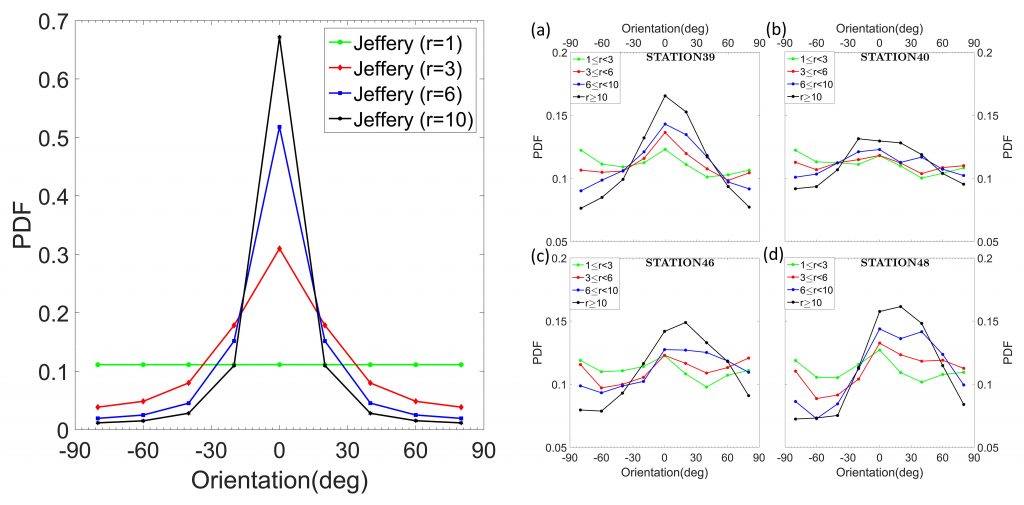Preferential particle orientation in the ocean
If particles could potentially exhibit non-random orientation, it could potentially have several consequences of note in ocean optics/marine ecology. For example, theory/models used to understand the propagation of light in the ocean often assume that the particle orientation is random. Preferential particle alignment can significantly change the optical properties such as backscattering and attenuation relative to random distributions. Ecologically, the ability of chain-forming planktonic species to maintain horizontal orientation could be beneficial, as recent modelling results clearly indicate that particles perpendicular to a light source receive more light than randomly oriented ones. The objective of this project was therefore, to characterize in situ particle orientation in the ocean and find any correlations with the local flow structure (if any).
Simultaneous, co-located depth profiles of particle fields and flow characteristics under different flow conditions as well as varying particle concentration loads, typical of those found in coastal oceans and lakes, were carried out during a two week deployment at Eastsound, WA. Clear evidence of ubiquitous,strong preferential particle orientation in the horizontal flow direction was observed, at various depths within the water column. On examining simultaneously obtained velocity shear profiles, it was found that orientation occurred in regions of low to near zero shear. Conversely, regions of high shear showed essentially randomly oriented particles. Similarly, higher turbulence levels correlated with random particle orientation (as one would expect), and all preferential orientation occurred in regions of low dissipation.

Furthermore, PDF distributions of particle orientation showed that with increasing aspect ratios, particles spent more time oriented to the horizontal, agreeing remarkably well with Jeffery’s theoretical model predictions for spheroids suspended in a simple shear flow. Our results clearly indicate nonrandom particle orientation in oceanic environments does occur, and seems to be nearly ubiquitous, at least for the observed shear and dissipation levels, both of which are wholly representative of the coastal and open oceans.

Reference(s): A.R. Nayak, M. McFarland, J. Sullivan and M. Twardowski, “Evidence for ubiquitous preferential particle orientation in representative oceanic shear flows,” Limnology and Oceanography 63(1), 122-143 (2018).
